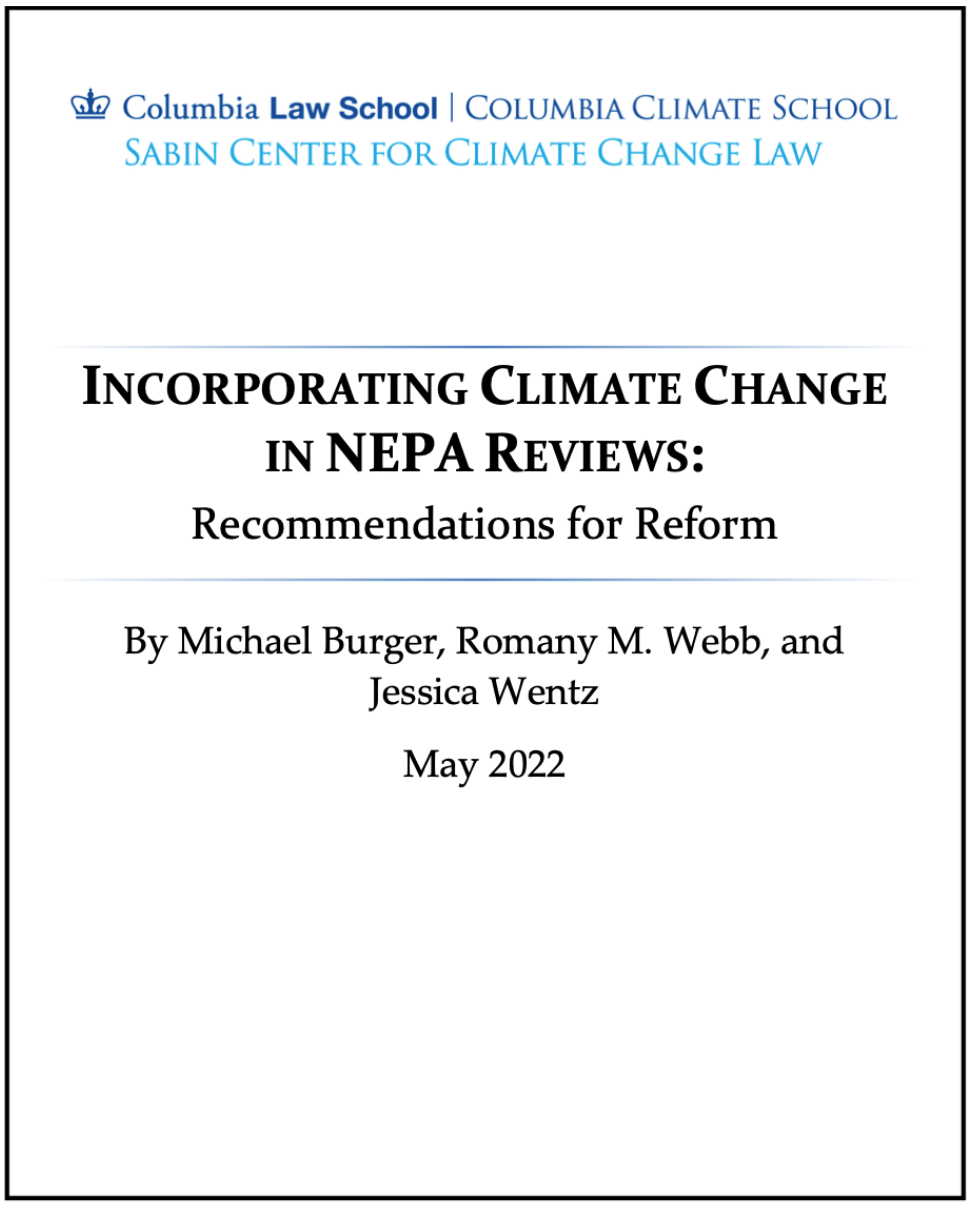By Michael B. Gerrard
 The National Environmental Policy Act (NEPA), signed into law by President Richard Nixon on January 1, 1970, was the first U.S. environmental statute of the modern era. It requires the preparation of environmental impact statements (EISs) for major federal actions that may have a significant impact on the environment. NEPA has gone a long way to improving federal decision-making. Similar laws have been adopted in many states and in most other advanced countries. Environmental impact review has become so pervasive that the International Court of Justice has declared it to be part of customary international law.
The National Environmental Policy Act (NEPA), signed into law by President Richard Nixon on January 1, 1970, was the first U.S. environmental statute of the modern era. It requires the preparation of environmental impact statements (EISs) for major federal actions that may have a significant impact on the environment. NEPA has gone a long way to improving federal decision-making. Similar laws have been adopted in many states and in most other advanced countries. Environmental impact review has become so pervasive that the International Court of Justice has declared it to be part of customary international law.
When climate change emerged as a significant issue in the late 1980s and early 1990s, pressure rose to consider greenhouse gas emissions under NEPA. Several federal court decisions declared this to be appropriate. However, the federal agency with the job of overseeing the implementation of NEPA – the Council on Environmental Quality (CEQ) – had not issued regulations requiring such analysis. Thus in 2008 the International Council for Technology Assessment, the Natural Resources Defense Council (NRDC), and the Sierra Club formally petitioned CEQ to adopt such regulations. I represented NRDC as their pro bono lawyer in this case.
Nothing much happened for the balance of the George W. Bush administration, but when Barack Obama took office, CEQ began to look seriously at the issue. In February 2010, CEQ released draft guidance that would call upon federal agencies to disclose climate change impacts as part of the NEPA process. CEQ invited and received comments on the draft guidance, but no final guidance was forthcoming. CEQ insisted it was working on final guidance but refused to give a timetable. Meanwhile, several courts affirmed that climate change was an appropriate subject for analysis under NEPA. The most recent of these decisions, High Country Conservation Advocates v. United States Forest Service, went so far as to call for use of the “social cost of carbon” in NEPA analysis.
In the absence of official guidance, however, federal agencies were rudderless in exactly how to carry out this analysis. A study performed by Patrick Woolsey for Columbia’s Center for Climate Change Law in July 2012, analyzing a database he created of 227 environmental impact statements, showed that some federal agencies were doing an excellent job of considering climate change in their EIS, while others were doing little or nothing. For example, environmental impact statements from the Federal Aviation Administration ignored the effect that sea level rise could have on airport runways, even though many are located on coastlines only barely above sea level.
Tired of waiting for the guidance to be finalized, on April 2, 2014, the International Center for Technology Assessment and the Center for Food safety sued CEQ in the U.S. District Court for the District of Columbia for never formally responding to the 2008 petition. On August 7, 2014, CEQ finally responded, two business days before the (once-extended) deadline for an answer in the lawsuit. CEQ wrote a ten-page letter that stated:
- CEQ’s “existing NEPA regulations … already encompass consideration of climate effects,” and therefore new regulations are not needed
- With respect to the draft guidance from 2010, “CEQ is considering how to proceed in light of the comments.”
- “Courts have found that GHG emissions and climate change issues need to be analyzed under the existing NEPA statute and regulations.”
In my view, CEQ is correct that new regulations are not needed; the existing regulations are broad enough to encompass climate change. However, I believe that guidance would be very useful. Moreover, it should be more specific than that provided in the draft guidance from 2010, which states general principles but furnishes few specifics about just how the analysis should be performed.
In the absence of clear guidance, many EISs calculate the total greenhouse gas emissions that are expected to result from a project, show that this total is some very tiny percentage of global greenhouse gas emissions, and conclude that, therefore, the project will have no significant climate impact. The analysis ends there. Of course, almost all projects – even the largest – will by themselves have only a tiny global climate impact. But that misses the point. Climate change results from the cumulative effect of millions of actions, and all large actions should take climate change into account if we are going to address this massive problem.
I believe that a meaningful analysis of climate change in the environmental impact review process would primarily address two questions:
- Is the project as energy and water efficient as possible?
- Will the project be resilient to the climate conditions that may exist at the end of its useful life – not only the beginning?
It makes no sense to construct buildings that will consume excess energy at a time when we need to reduce rather than increase our energy consumption, or to build runways or roads that will be submerged in a few decades. These kinds of mistakes can be avoided if meaningful analysis is performed during the environmental impact review process.
One example of where EISs are increasingly looking at how future climate change will affect the subject projects (and not only the other way around) is New York City, where EISs are prepared under the New York State and City equivalents of NEPA. A recent analysis by my Columbia colleague Ethan Strell found numerous EISs for New York City projects that did include this analysis, and as a result several of the projects have been modified to increase their resilience.
Special challenges are raised by fossil fuel extraction and processing. There is increasing acceptance, including by the Intergovernmental Panel on Climate Change, of the concept of the carbon budget– the total amount of carbon that can be extracted from the earth and burned before greenhouse gas concentrations in the atmosphere become intolerable. The draft CEQ guidance did not address this issue, but the effect on the carbon budget needs to become a central part of the analysis of such actions as the leasing of federal lands for coal mining and oil and gas extraction, the issuance of drilling permits, and the approval of pipelines, ports and tracks that will allow this fuel to reach market.




